
OFFICIAL
Reserved seating on
V/Line services
Organisational strategy
Presented by the V/Line Customer Experience team
OFFI CIAL
OFFICIAL
P a g e |
ii
1. Introduction
3
Purpose
3
Background
3
2. Patronage and feedback
3
Feedback
3
Patronage
3
3. Change management framework
4
Analysis and determination of proposed solution
4
Community consultation (where required)
4
Trial implementation of reservation change
4
Permanent implementation of reservation change
4
4. Line by line overview
5
5. Additional improvements to assist passengers
8
6. Appendix I Albury activation plan
9
Introduction
9
Purpose
9
Background
9
Goals and objectives
10
Key operational decisions for implementation
11
Timeline
13
Stakeholder matrix
14
Activation plan
16
Required actions
16
Planned disruption
20
Communication messages
20
Budget
26
Evaluation
26
7. Appendix II Warrnambool line community consultation plan
27
Purpose
27
Background/scope
27
Activation matrix
28
Methodology and participant recruitment
29
Data output
30
Surveying schedule
30
Communications copy
31
Survey content
31
Booking confirmation copy
32
eDM copy (sent to subscribed passengers and ARG members)
33
QR code card copy
33
Budget
33
ii
OFFICIAL
OFFICIAL
Introduction
Purpose
The purpose of this plan is to outline the current and proposed future state of seat
reservation allocations on V/Line long distance trains.
Background
Following the introduction of the regional fare cap long distance services have seen a
significant increase in popularity, this has led to all seats being taken up and some
passengers needing to stand for long periods on select services, particularly on weekends.
In many cases, staff have arranged banker coaches to supplement the service, with some
passengers choosing to transfer onto coaches and some choosing to remain standing on the
train.
V/Line has committed to investigating changes to the reservation system to help reduce the
number of passengers required to stand and improve comfort for passengers and is looking
into a number of options to address the issue.
One of these options is changing the reserved seating allocations for passengers to provide
greater certainty when planning and better manage passenger expectations on whether they
will get a seat.
A summary of other initiatives in place to address the increased popularity of long distances
is included in the appendices.
V/Line currently operates long distance reserved services on the Warrnambool, Swan Hill,
Shepparton, Albury and Bairnsdale lines.
Each line has a unique combination of rolling stock used, service frequency, planned
infrastructure upgrades and patronage and as such requires bespoke consideration when
making changes to seat reservations.
Patronage and feedback
Feedback
Line
Relevant feedback cases
Relevant feedback cases
from 31 March – 25
from 31 March – 25
September 2023 (post
September 2022
“fare cap”)
Warrnambool
24
2
Swan Hill
2
0
Shepparton
7
0
Albury
51
16
Bairnsdale
8
0
Patronage
OFFICIAL
OFFICIAL
Line
Average
Average
Average
Average
weekday
weekday
weekend day
weekend day
patronage from
patronage from patronage from
patronage from
31 March – 25
31 March – 25
31 March – 25
31 March – 25
September 2023
September
September 2023
September
(post “fare cap”) 2022
(post “fare cap”) 2022
Warrnambool 1032
540
1302
1367
Swan Hill
570
368
749
347
Shepparton
1316
706
876
514
Albury
1007
501
1309
612
Bairnsdale
760
698
732
636
Change management framework
Each line requires bespoke changes to reservations and the changes may not be able to be
implemented at the same time, the below provides a framework for implementing each
change with a focus on engaging with passengers to ensure the change is fit for purpose.
Analysis and determination of proposed solution
-
Commencement of change management working party
-
Compilation of up-to-date feedback and patronage data as well as other subjective
metrics such as media and stakeholder sentiment.
-
Compilation of line specific logistics (frequency, rolling stock etc.)
-
Discussion and determination of proposed changes to reservation system
-
Determine if community consultation is required
Community consultation
-
Create community consultation plan (see example in Appendix II)
-
Drafting and approval of messages for proposed change
-
Create digital survey and distribute through communications channels
-
Complete in-person consultation on select services encouraging passengers to
complete survey via QR code.
-
Consult directly with heavily involved stakeholders as required
-
Analysis of data
Trial implementation of reservation change
-
Detailed analysis of operational situations to determine specific changes/improvements
that are required to implement change.
-
Seek approval to implement change
-
Develop activation plan (see example in Appendix I)
-
Ensure consideration of passengers with accessibility requirements in proposed change
-
Public announcement of trial
-
Implementation of activation plan (including ongoing readiness meetings)
-
Commencement of trial
-
Ongoing monitoring and analysis of trial
-
Voice of Customer session onboard services
Permanent implementation of reservation change
-
Complete a lessons learnt of trial including additional community consultation if required
-
Determine any changes from the trial to implement for the permanent change
-
Seek approval to implement change
-
Develop activation plan (see example in Appendix I)
-
Public announcement of change
-
Implementation of activation plan (incl. readiness meetings and monitoring as reqd.)
OFFICIAL




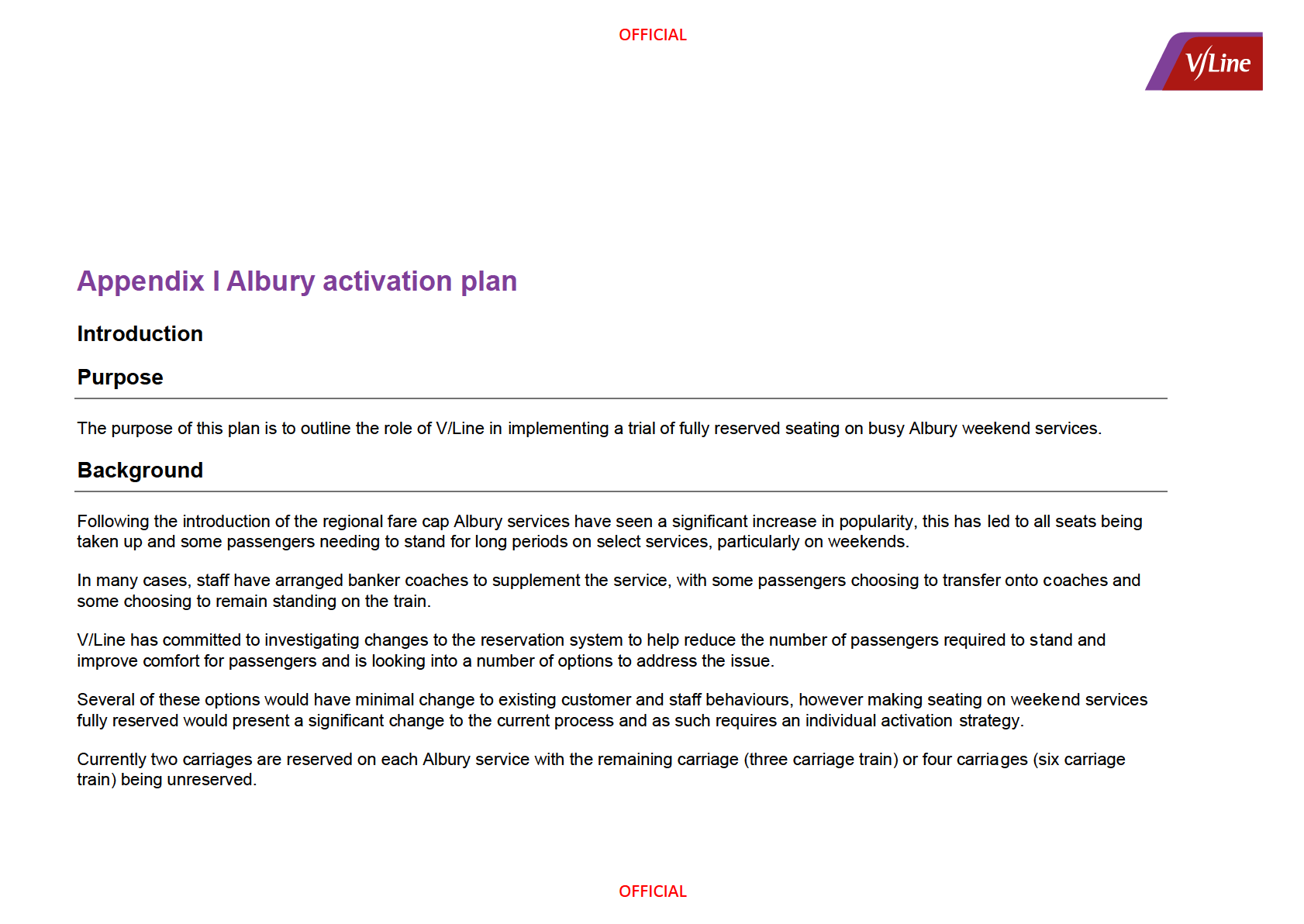
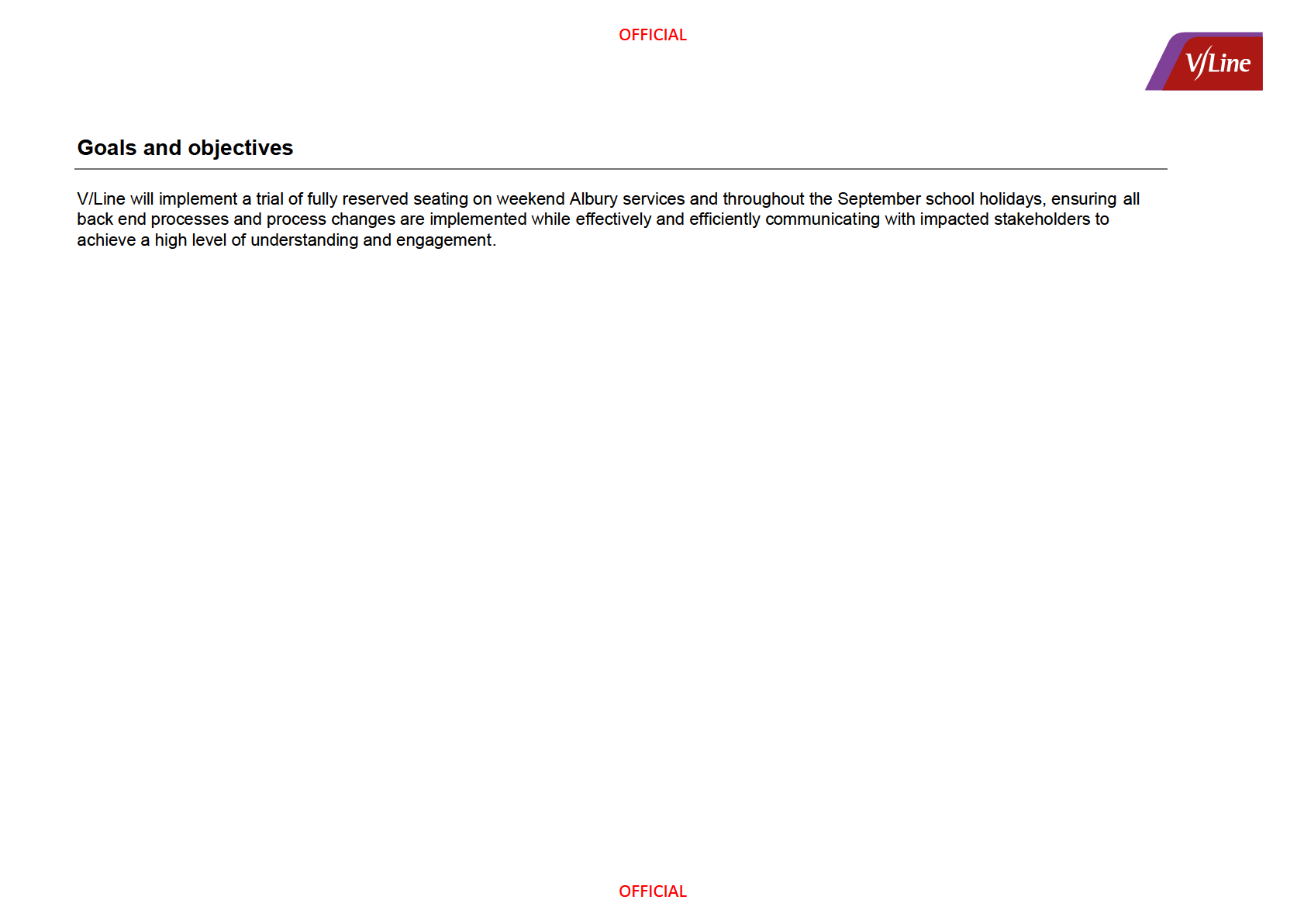
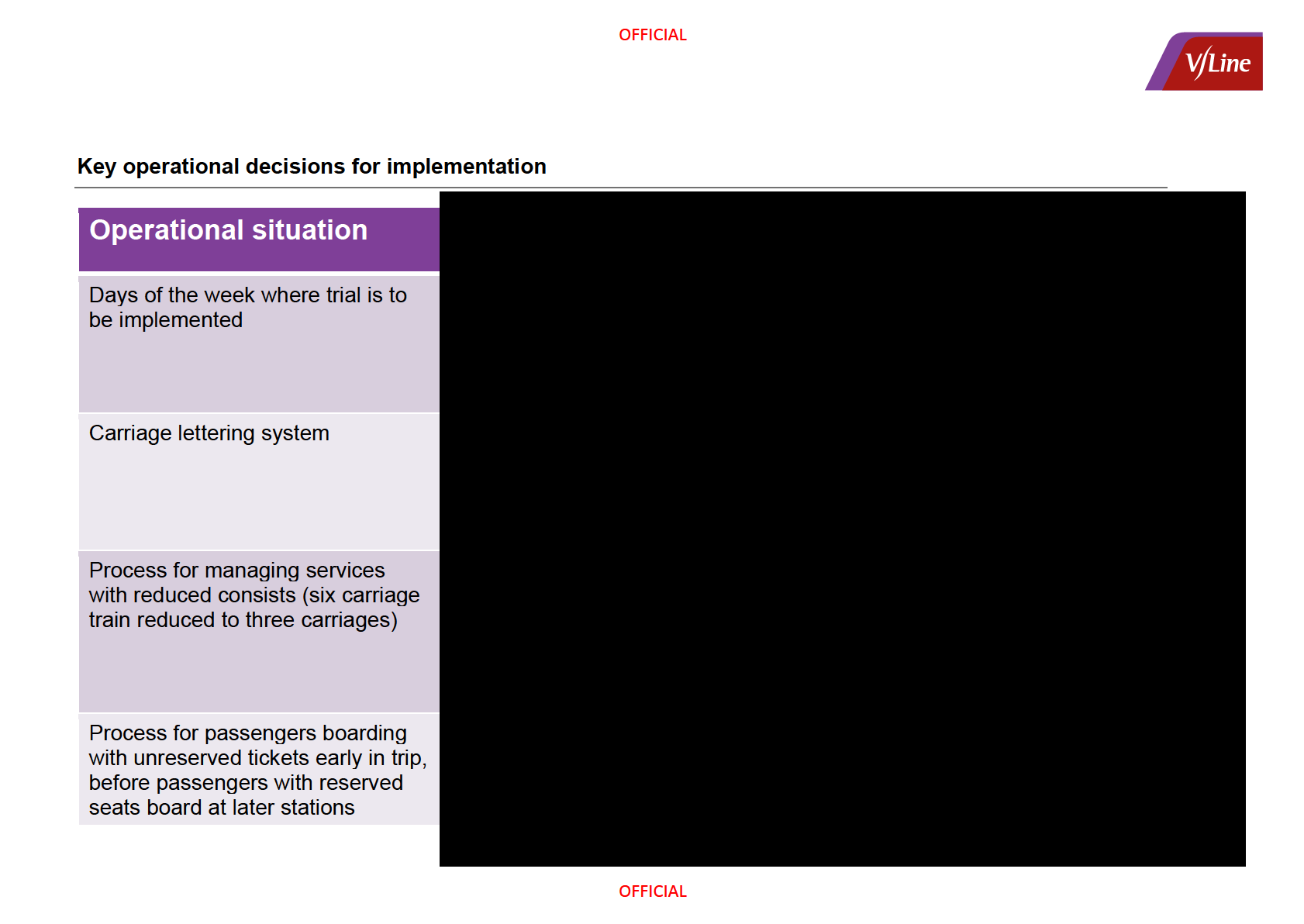
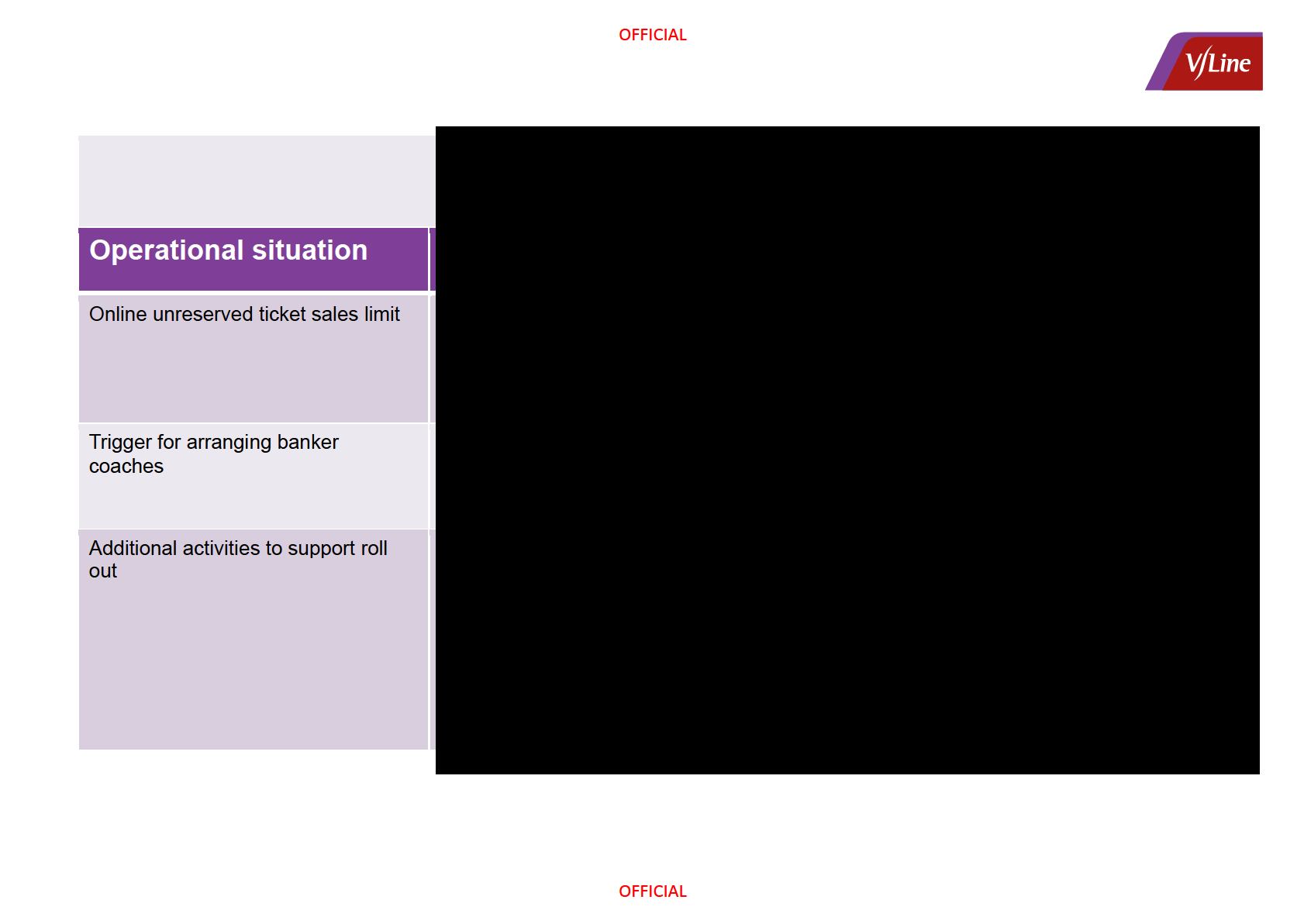
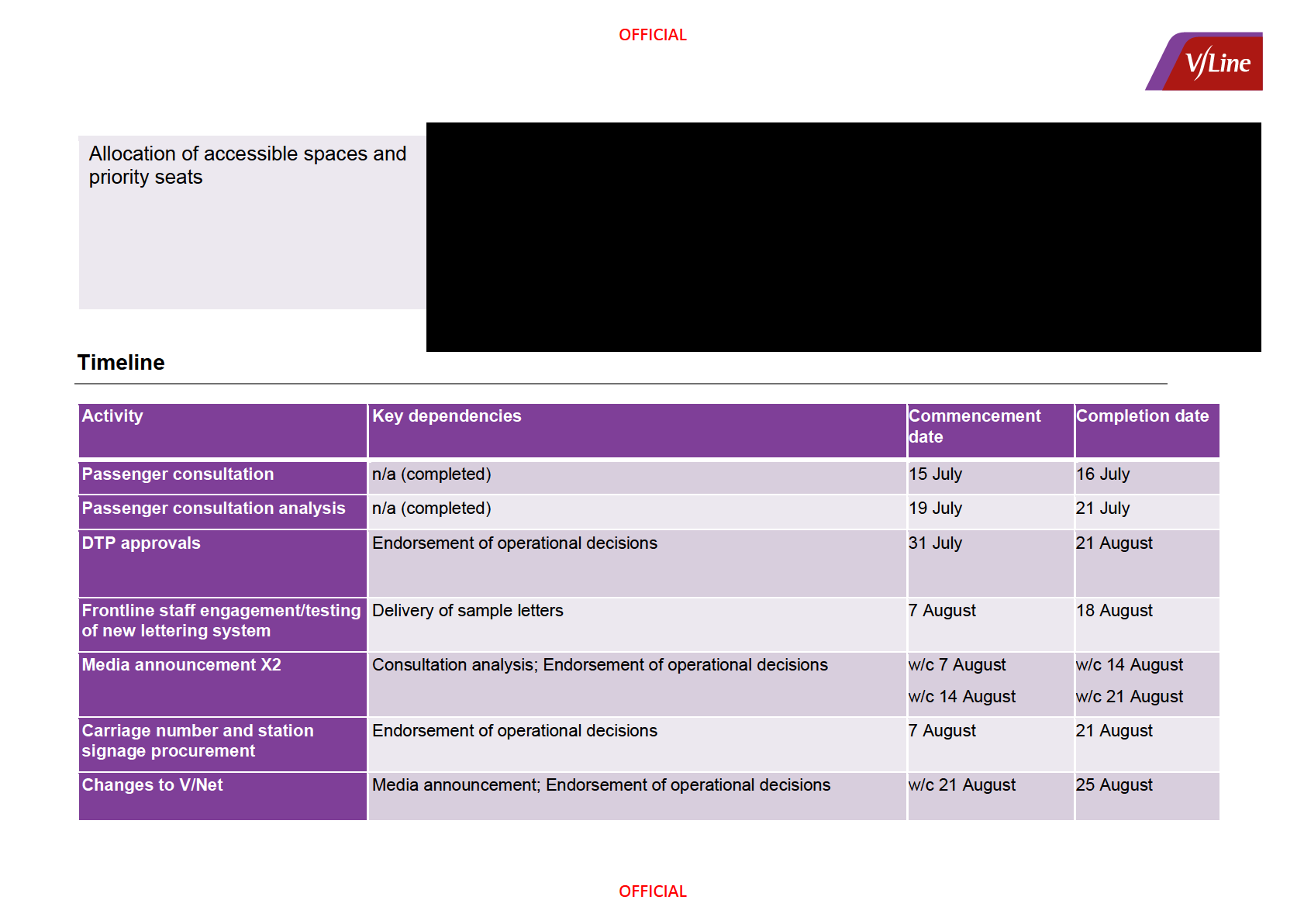
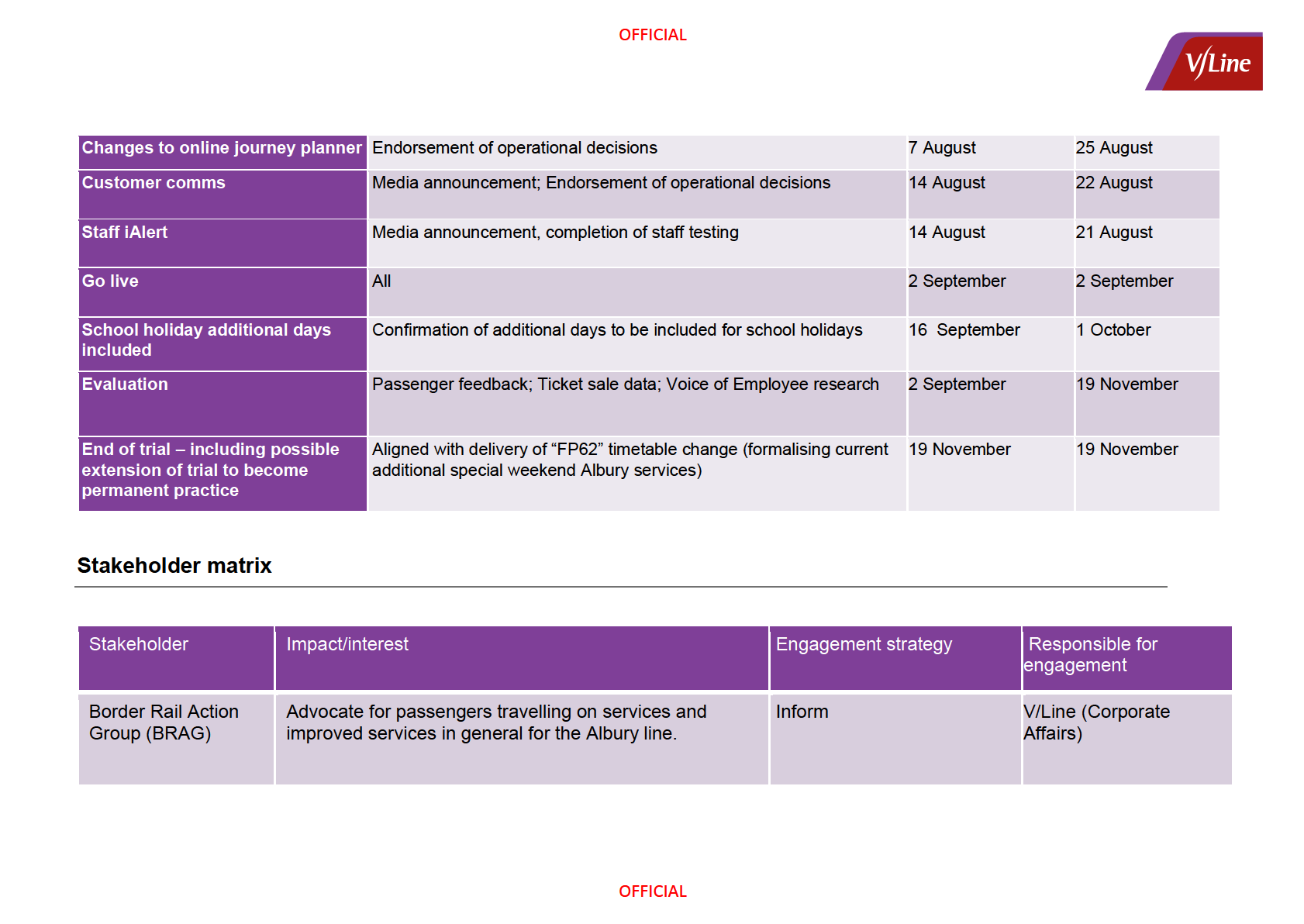
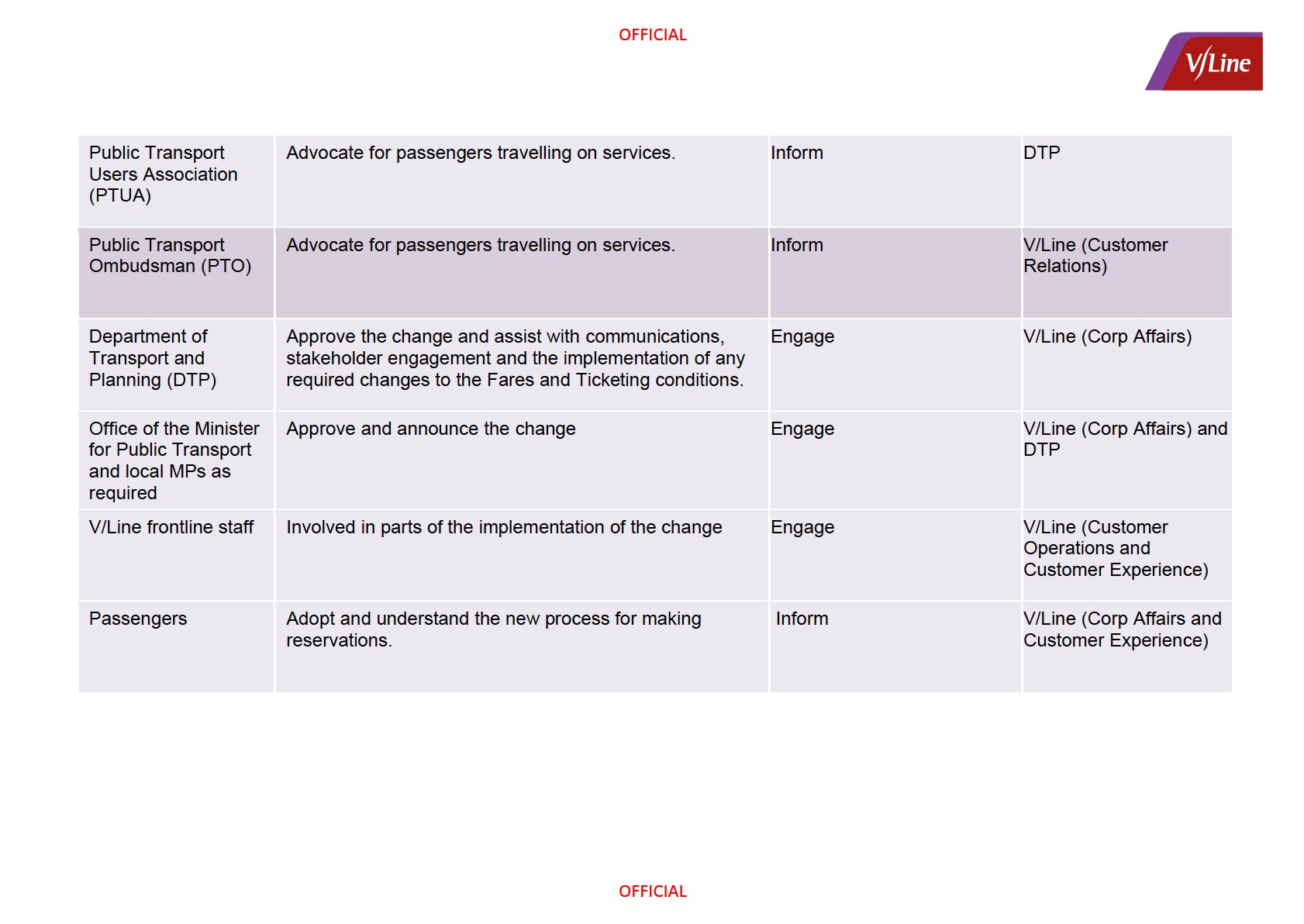
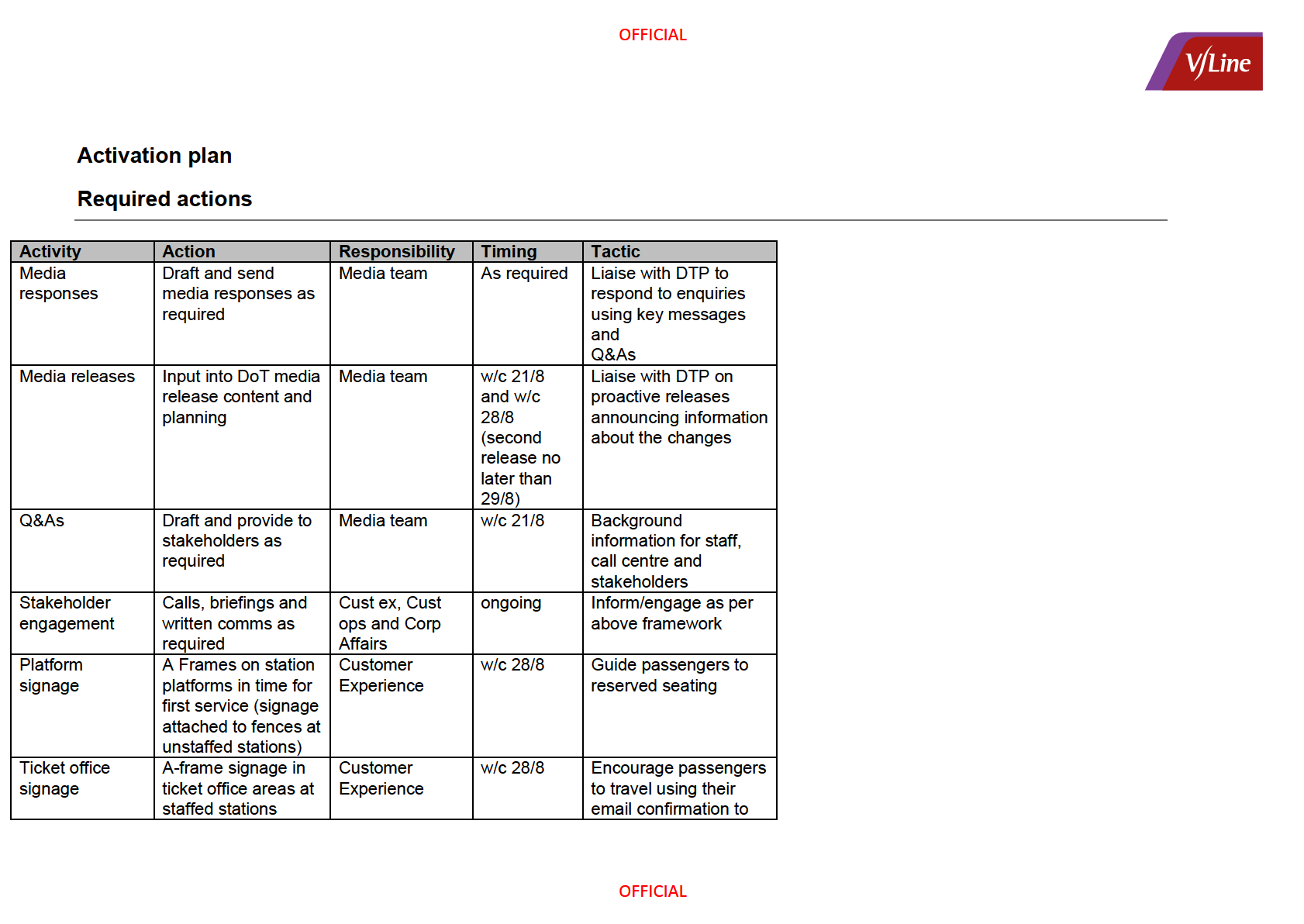
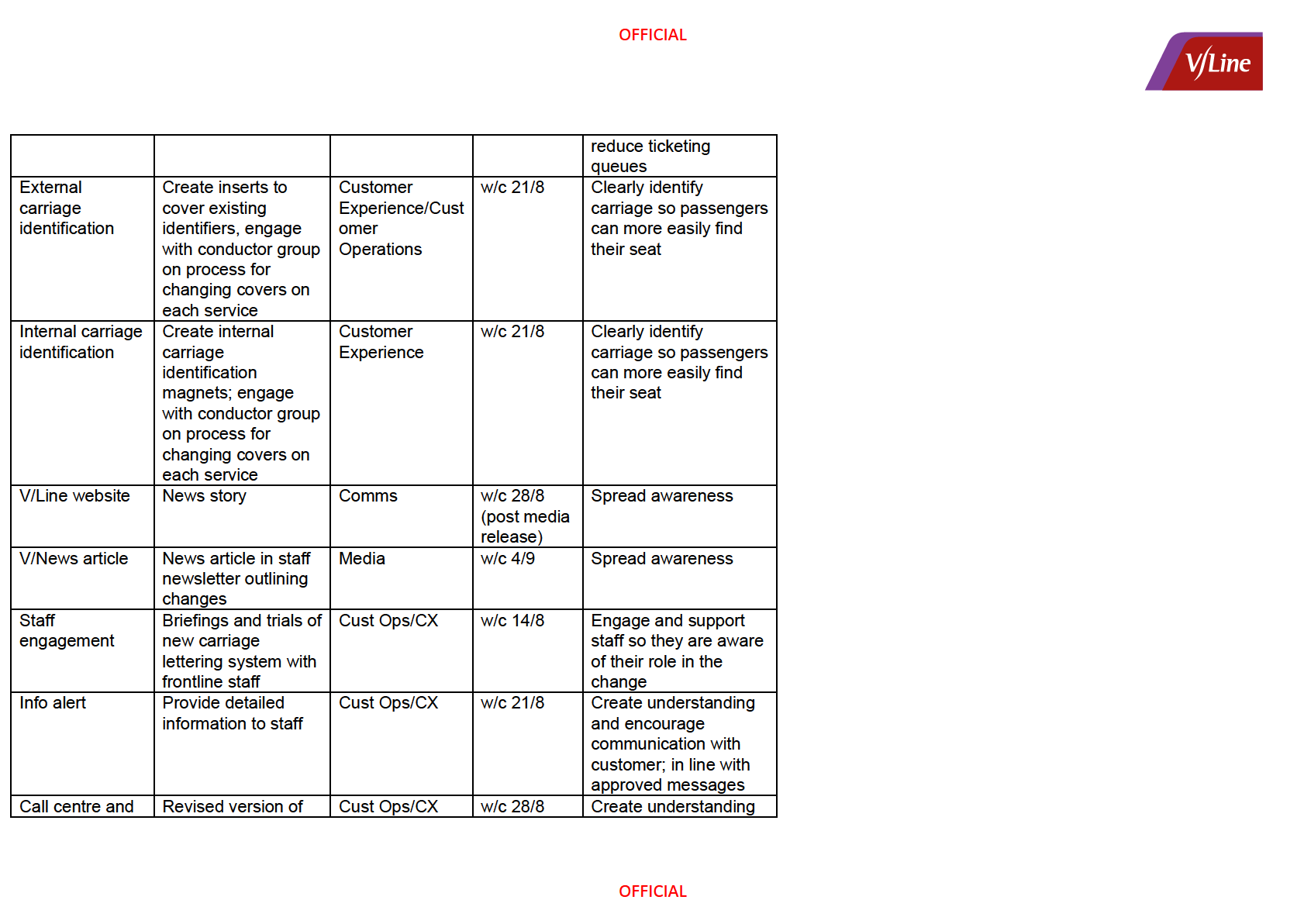
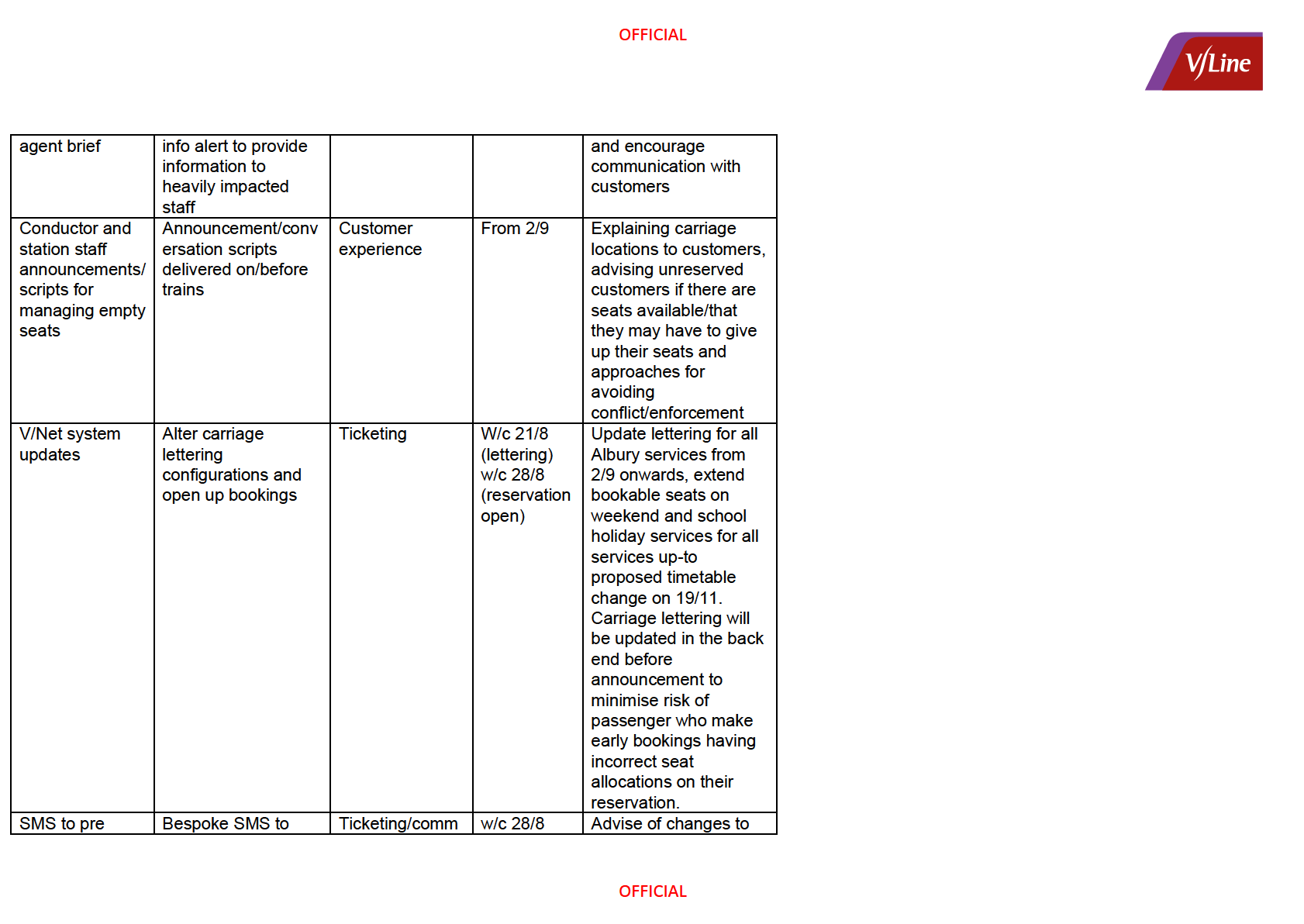
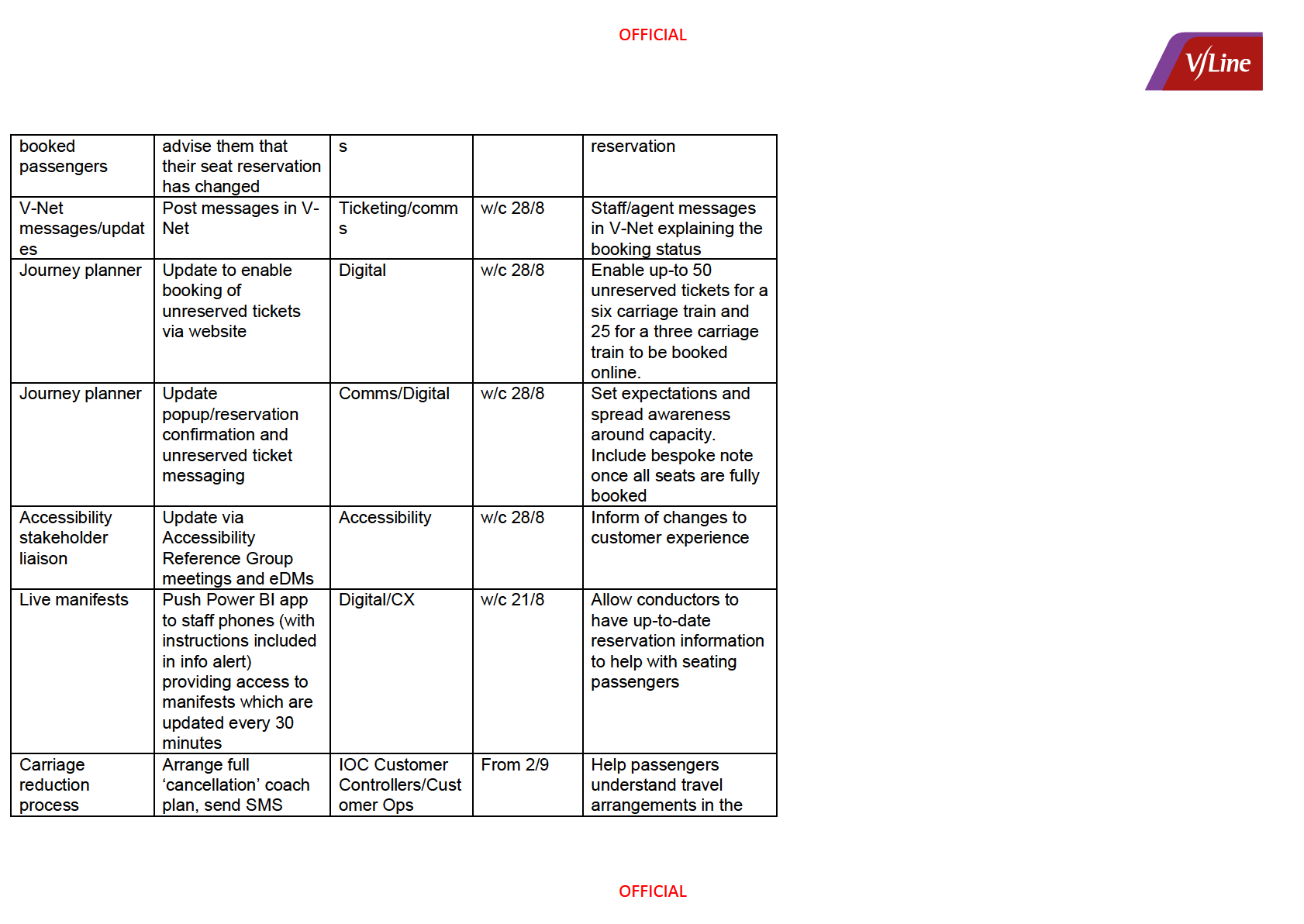
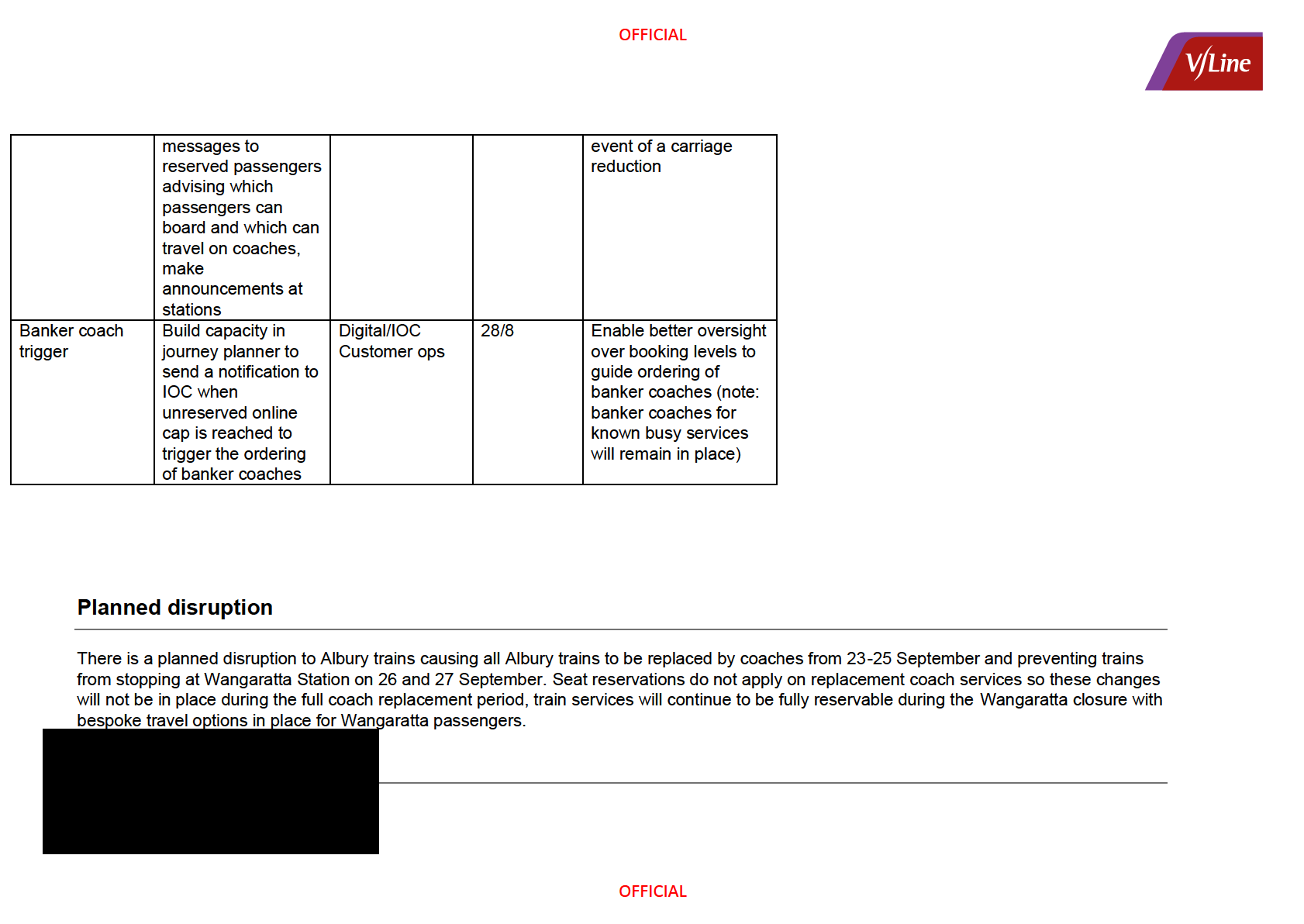





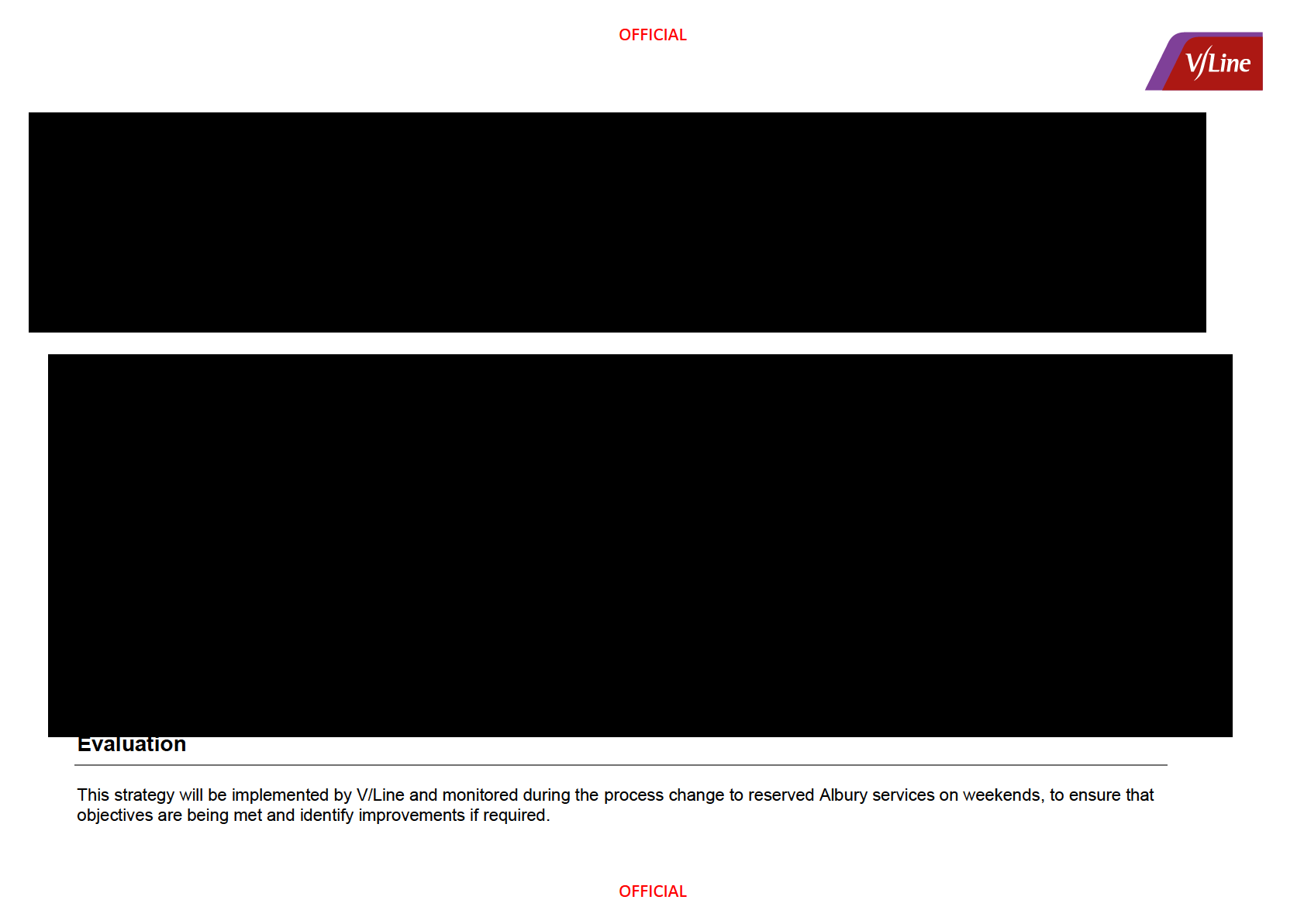
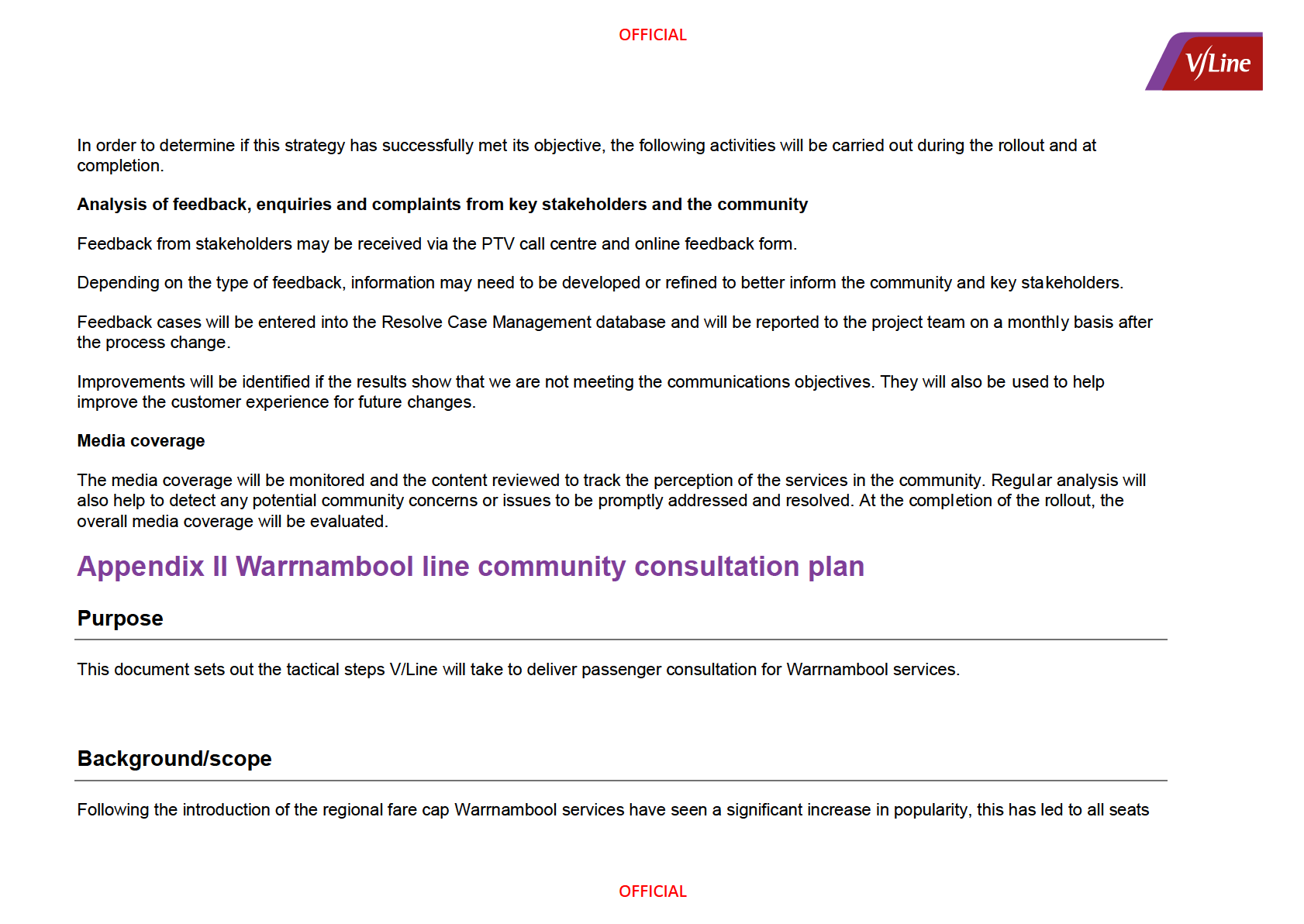
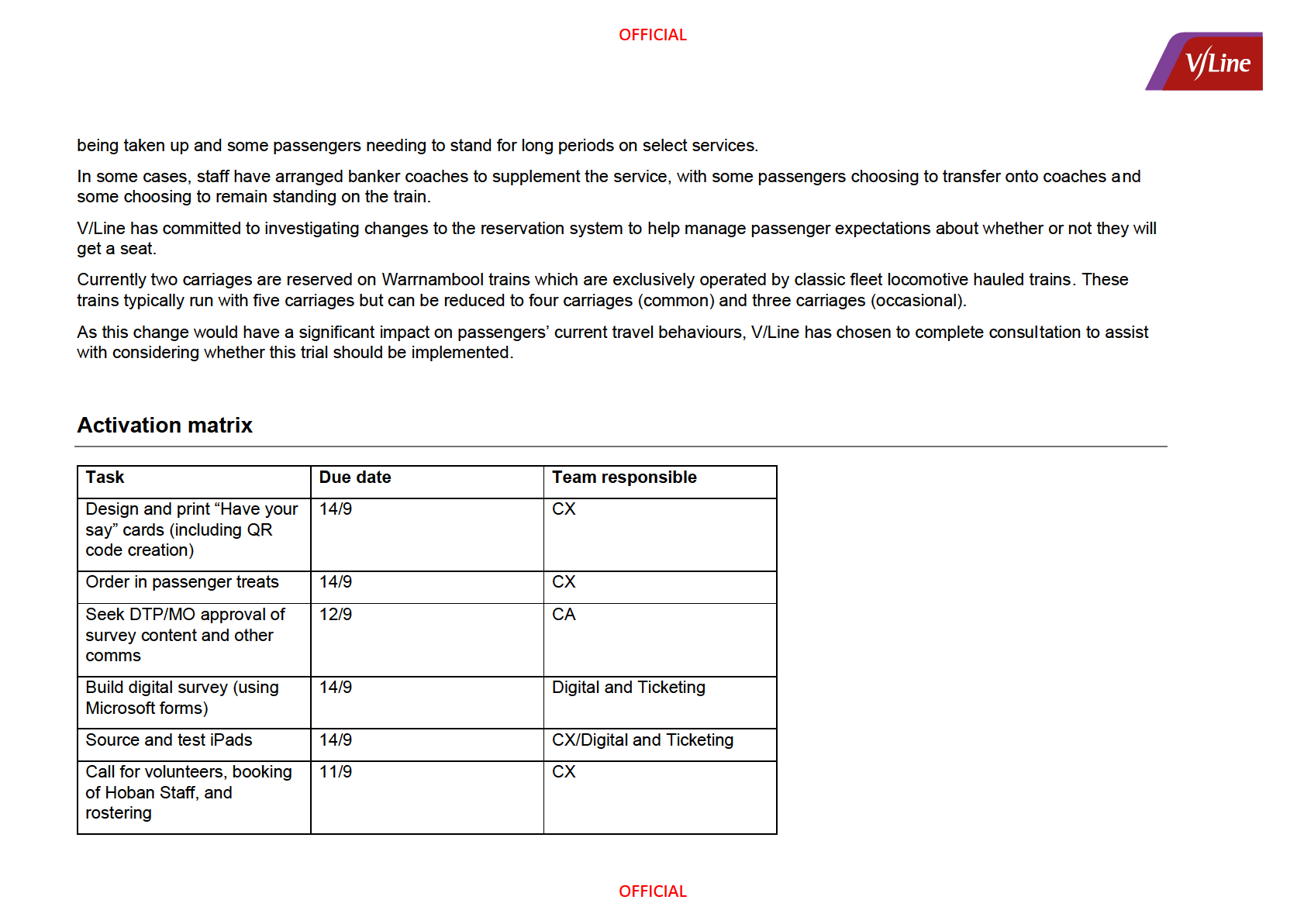
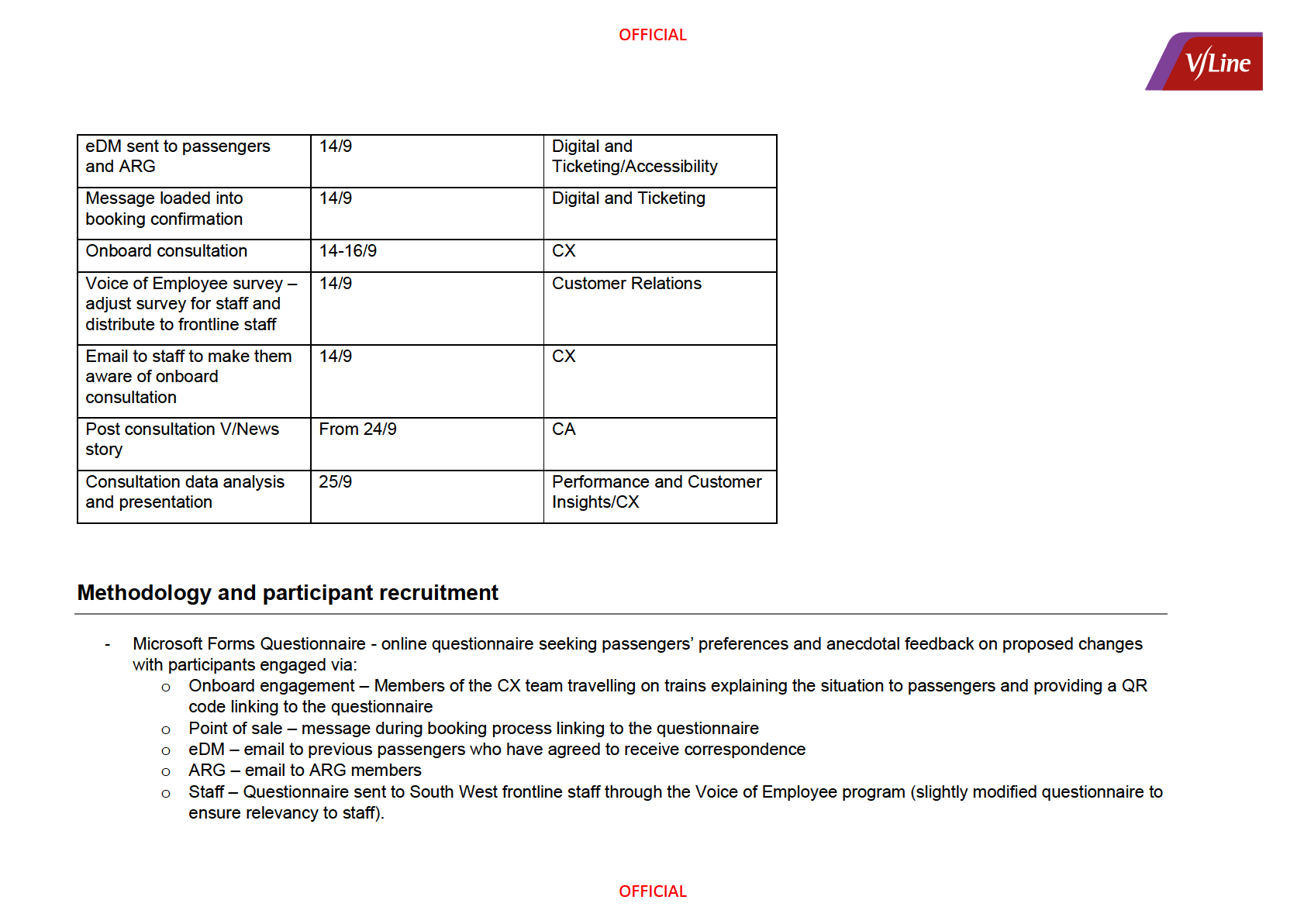
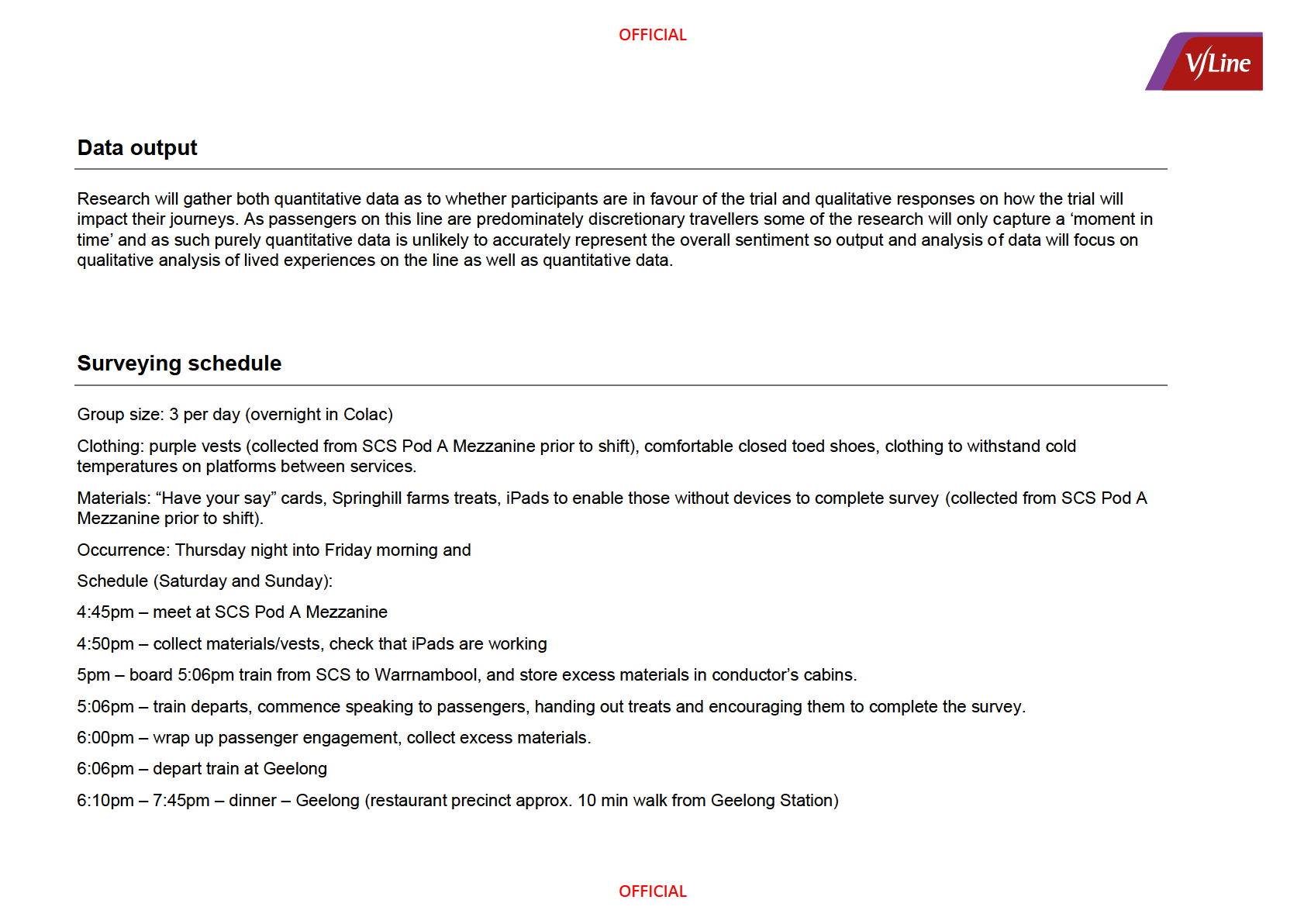
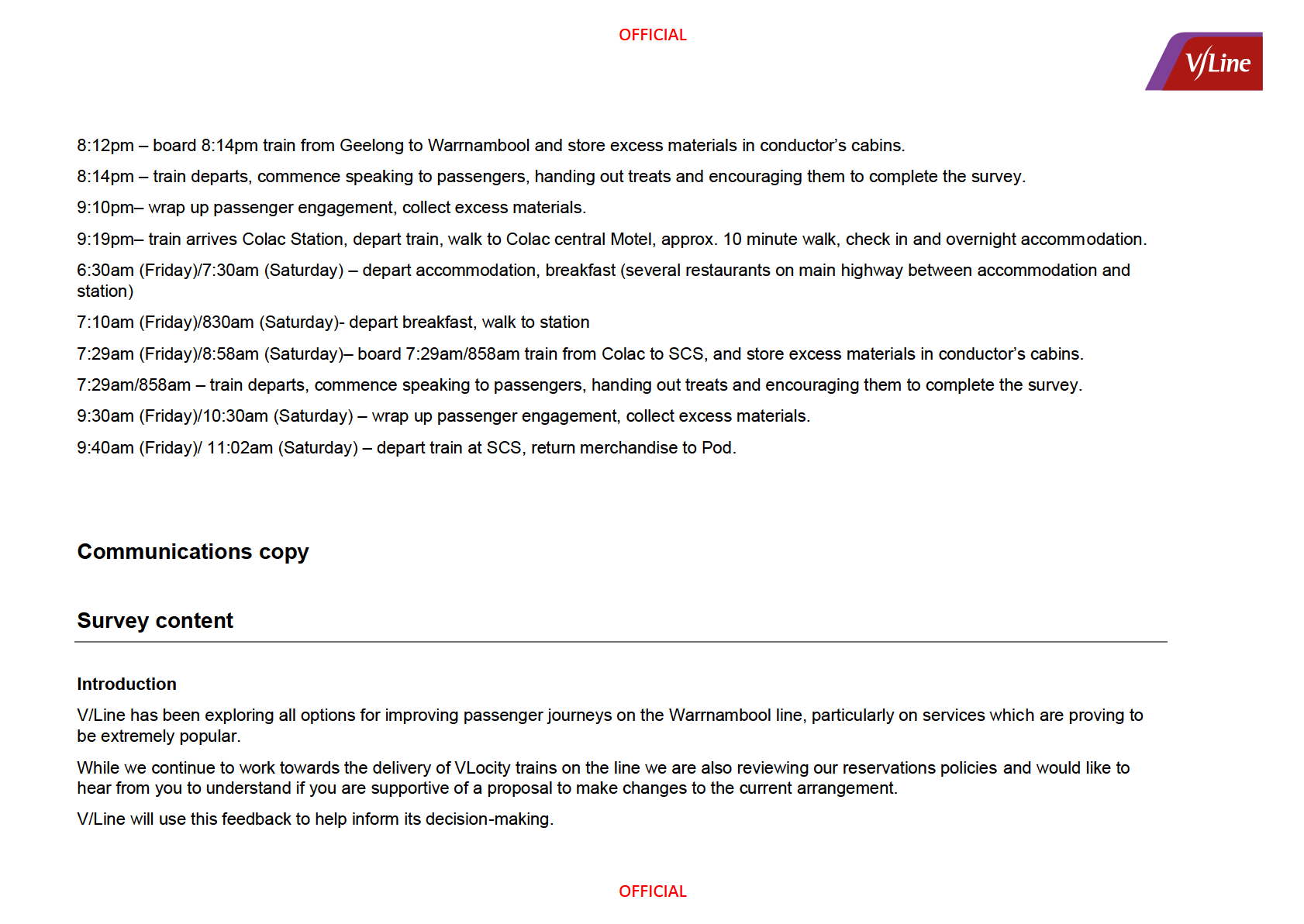
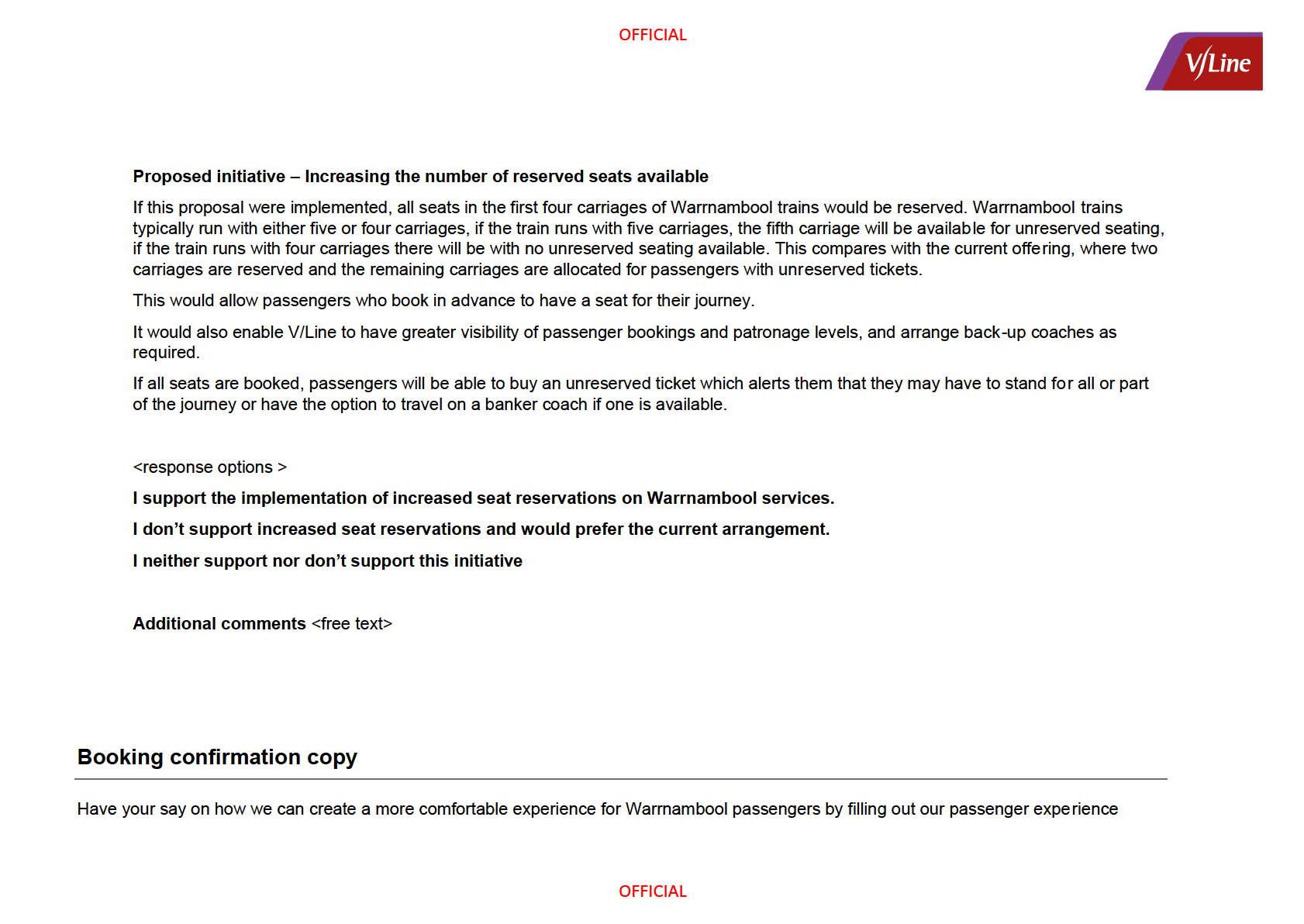
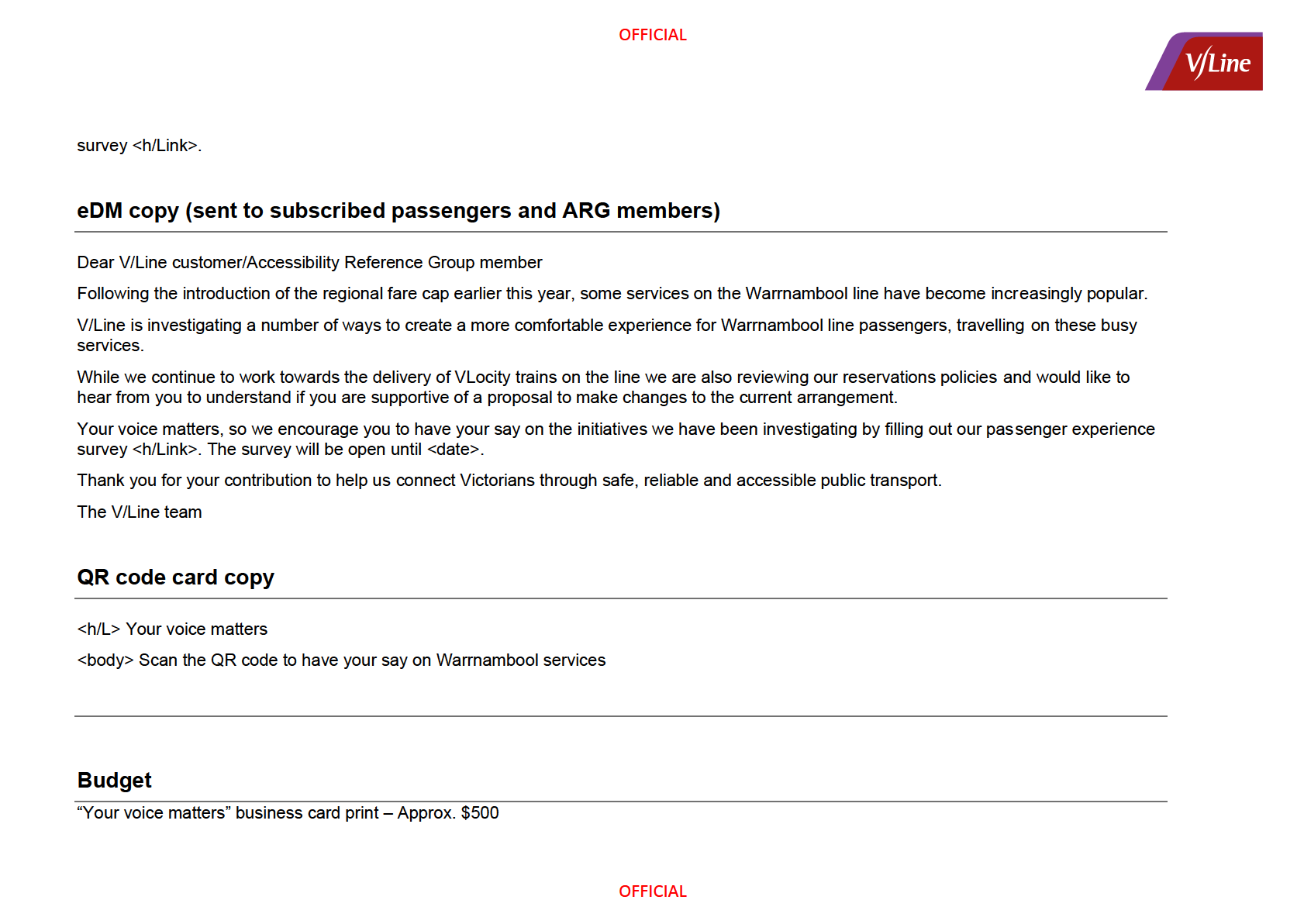
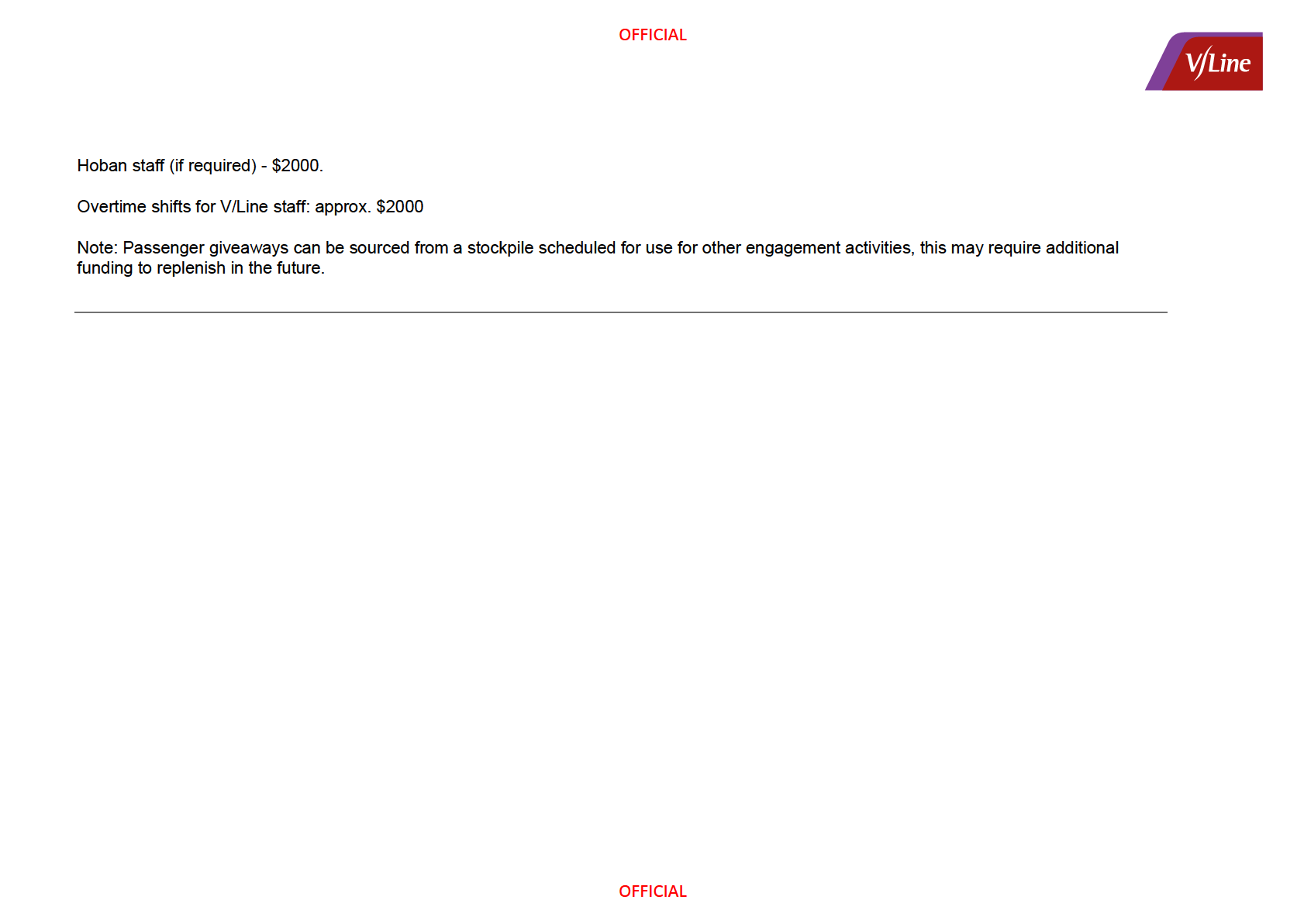
OFFICIAL
OFFICIAL






























